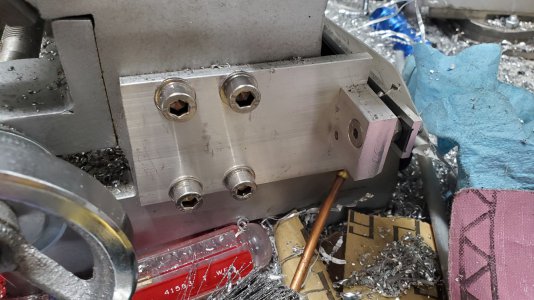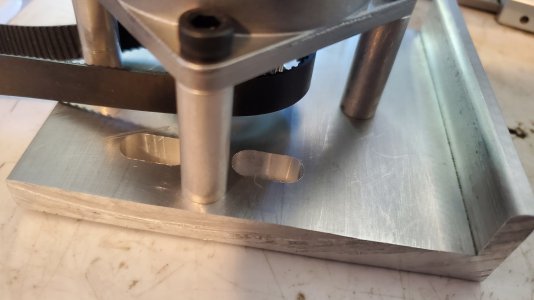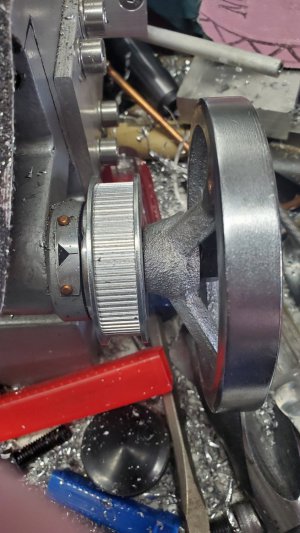- Joined
- Feb 24, 2019
- Messages
- 948
I'm getting ready to add the stepper motor to my X-axis on my lathe (combo).
When I bought the machine it had 4 bolt holes at the end of the way that I used to mount the DRO. It took a while to set it up to be perfect.
Those holes will be the best place to mount the stepper motor. I made a bracket for the stepper and being able to mount to those holes.
The mount can work fine on top of the bracket for the DRO.
The problem. To adjust the belt tension on the stepper I will need to loosen those 4 bolts each time and that can/will affect the DRO mount position so it would need to be reset. That would change the belt tension and it will be a battle.
My first thought is to drill a pair of securing bolt holes to the original bracket (in top picture). Since it's already there and in place, I could just drill a pair of M5 holes and tap directly into the cast iron of the lathe. It won't affect the durability or any other feature of the lathe.
If there's a better/easier way to do this?
Ignore the mess



When I bought the machine it had 4 bolt holes at the end of the way that I used to mount the DRO. It took a while to set it up to be perfect.
Those holes will be the best place to mount the stepper motor. I made a bracket for the stepper and being able to mount to those holes.
The mount can work fine on top of the bracket for the DRO.
The problem. To adjust the belt tension on the stepper I will need to loosen those 4 bolts each time and that can/will affect the DRO mount position so it would need to be reset. That would change the belt tension and it will be a battle.
My first thought is to drill a pair of securing bolt holes to the original bracket (in top picture). Since it's already there and in place, I could just drill a pair of M5 holes and tap directly into the cast iron of the lathe. It won't affect the durability or any other feature of the lathe.
If there's a better/easier way to do this?
Ignore the mess




